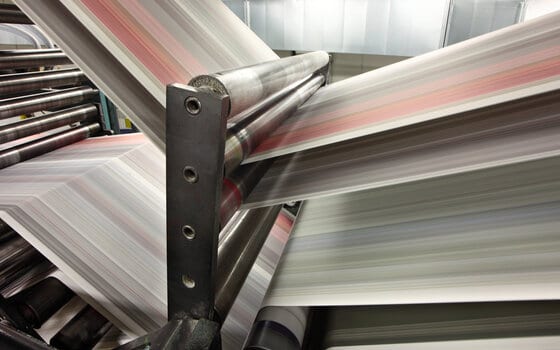-
InsightsClient Story - Industrial Disease Claims - POSTED: May 30 2022
Brachers wins printer six-figure compensation on mesothelioma claim turned down by London firm
Mesothelioma compensation for former printer
- Share this article
- Print this article
-
-
Brachers Partner and asbestos disease specialist Jeremy Horton has acted for a former printer in a successful claim for damages in a tragic case of fatal mesothelioma.
The claim had previously been rejected by another leading London-based asbestos specialist firm, but our thoroughness and focus established a case that successfully resulted in our client receiving a six-figure compensation.
Overcoming initial evidential challenges
RG, of Snodland, Kent, was sadly diagnosed with the fatal cancer mesothelioma, which is nearly always caused by asbestos. However, initially he could not think of where he had been exposed to asbestos.
RG had worked as a printing press operative in London then Kent for 30 years He then spent 18 years managing a freight packing business and two years as a building labourer on new builds.
It seemed to us his only possible work asbestos exposure would have been his time as a printer at music publisher and printer Novello & Company, coinciding with the asbestos heyday(1950-80) when it was seen as a ‘magic mineral’ put to wide-ranging commercial uses. However, initially RG was unable to think of any way he could have been exposed at this time.
Our research confirmed asbestos was used widely in papermaking (for fire protection/ insulation due to the high temperatures). However, once the paper was made, it was rarely used in the printing industry. But there was one very specific use: loose amosite asbestos to insulate molten hot lead crucibles used in linotype machines.
RG told us that he never operated linotype machines, just more regular printing presses (Heidelberg and Wharfdale). So, we asked him about the machines operated by others close to him. We found that in the early to mid-1970s, his printing company, had moved him to a small room where he stood at his own printing press next to a linotype printer.
Loose fill asbestos insulating material inside the linotype printer was quite regularly removed and replaced on routine maintenance and ad hoc repairs. This released dust and fibres visible in the air where RG was working, several feet away. He was provided with no face mask or other protection.
Given the application of the strict Asbestos Regulations 1969 we advised he had a good claim.
Progression of the mesothelioma claim
We took a full statement from RG, and obtained medical evidence from a Consultant Chest Physician, who attributed his mesothelioma to this asbestos exposure as a printer. The physician confirmed this had shortened RG’s life expectancy by nearly four years.
No employer liability insurers could be identified for the company for the exposure period. However, despite a recent change of ownership, Novellos still existed and appeared to be solvent.
Therefore, we sent a formal letter of claim to them. As no meaningful response was received, we prepared and issued proceedings in the fast-track specialist asbestos list in the Royal Courts of Justice.
How we helped the client overcome challenges to the claim
In their defence Novello denied liability and claimed RG was mistaken about them using linotype printers insulated with asbestos.
They argued that they had only printed sheet music and that from the 1960s only photo lithographic machines were used, which had no hot parts and therefore did not use asbestos.
We thoroughly investigated and researched this defence and found that at the time they did not just print sheet music but also printed many closed test books and periodicals, including The Musical Times, for which a linotype printer could and would have been used. We were able to produce evidence of this to disprove their spurious defence.
Given the denial we also instructed an occupational hygienist to support the claim.
The defendant then tried a different tactic by arguing they had little or no assets and that their US parent company could just wind them up unless our client accepted a low economic offer.
However, we obtained from Companies House evidence of the defendant’s accounts which showed that despite a low turnover it owed significant assets in music rights and therefore should have the money to pay the claim in full.
A fair result achieved for our client
The defendant wanted to agree a costs inclusive offer, well below our valuation of the case. We responded with a Part 36 offer of damages and insisted payment of our legal costs should be dealt with separately.
This offer was rejected and met with an improved costs inclusive offer, but still too low in our view. So, we made a final Part 36 damages offer for a large six figure sum, which they accepted, within just four months of our issuing proceedings.
The figure eventually agreed was nearly double their original offer. In our view it was a fair and reasonable settlement.
Despite this, no amount of compensation could make up for the dreadful disease our client had suffered, nor his widow’s tragic early loss of her husband a couple of months after the settlement.
RG and his wife commented: “We would like to thank you both for all your help in getting compensation for Bob, and all your hard work with no hassle on our part.”
How can we help you?
This mesothelioma claim was dealt with by Jeremy Horton, with the valuable help of the wider Personal Injury team.
Jeremy specialises in asbestos compensation claims and is the only APIL Accredited Occupational and Asbestos Disease Specialist solicitor in Kent, Medway, Essex, Surrey and Sussex. He is passionate about helping asbestos disease victims and their families achieve fair compensation as quickly as possible.
This content is correct at time of publication
Can we help?
Take a look at our Industrial Disease Claims page for useful information, resources, guidance, details of our team and how we may be able to help you
-
Key contact:
Get in touch
Please fill out the below form or alternatively you can call us on 01622 690691

